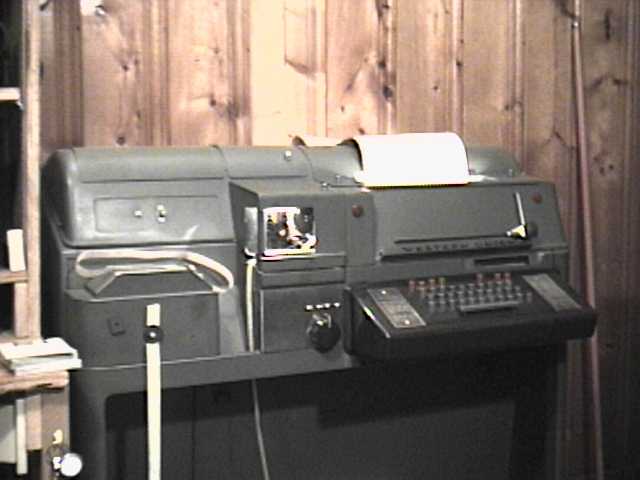click on home button to open mainpage
| <picture>
inventor papers & manuals hardware software
|
General
A Model 28 ASR Teletype machine. The Cadillac of teleprinters, this model includes a manually operated 60, 67, and 100 wpm gear transmission. Also contains a printing chadless reperferator. This particular unit is currently teamed up with a HAL ST-5000 TU, fed by a Collins S line. It still prints RTTY bulletins from W1AW on a weekly basis.
Teletype Corporation ASR-33 teleprinter
Operation of these machine, used in 1920-1950, is almost purely mechanical; the only part that could be considered "electronic" is (fairly simple) power supply. Speed of communication is 110 baud, or approximately 10 characters per second (about 100 words/minute). The keys has to be depressed about a half-inch before a character would be generated. The teletype machine is only capable of rendering text in upper case (due to the limited size of the cylindrical print- head). Stone Age, yes; but functional. (1)
(2) This is perhaps the first impression nascent
programmers got of computing (at least in my generation). These sturdy
devices provided hardcopy output and a keyboard for input in the same
enclosure. Specifications Chronology
|
![]()
| Last Updated on 12 September, 2002 | For suggestions please mail the editors |
Footnotes & References
| 1 | Copyright © 1995, 1996, 1997, 1998 Telegram Gateway © |
| 2 | Copyright © 1996, 1997, Carl R. Friend. All rights reserved.carl.friend@stoneweb.com |